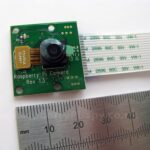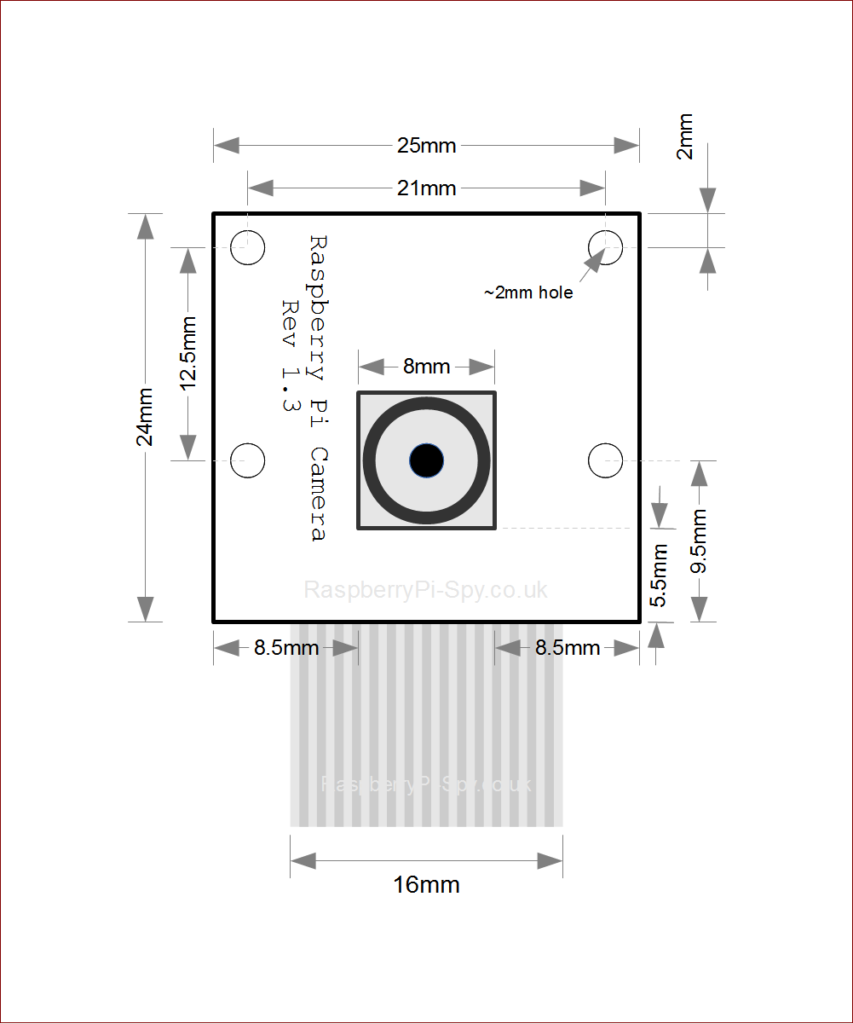Having played around with the Pi camera I quickly realised I needed to make some sort of stand for it. The module weighs almost nothing and is tiny so it can be quite hard to keep in one place when you are experimenting. The Raspberry Pi Foundation apparently recommends Blu-tack, based on cost, simplicity and plain, old fashioned versatility.
 I thought it would be best to create a template that I could print out and use to create a camera holder without using the real module. That way I could get all the dimensions correct without worrying about squashing or dropping the module itself.
I thought it would be best to create a template that I could print out and use to create a camera holder without using the real module. That way I could get all the dimensions correct without worrying about squashing or dropping the module itself.
So here is a diagram showing the main module measurements.

The PCB is 25x24mm and is approximately 1mm thick. The distance between the reverse side of the PCB and the face of the camera is 6mm. The mounting holes will accept a 2mm machine screw according to various posts and photos I have seen.
Printing
You can either print the image above (click to get a bigger version) or use the Raspberry Pi Camera Module Diagram PDF. The image outline and the rectangle in the PDF are 50 x 60mm. You may need to set your printer driver to scale the diagram by 50% to ensure the module comes out 25mm wide.
If I manage to create a camera stand or mount that isn’t too embarrassing I will be sure to write an article about it and share photos.
Disclaimer : I’ve attempted to measure and represent the measurements as best I can using a set of plastic calipers I got free on the cover of a magazine. Please check before cutting or drilling anything.
If there is anything incorrect please let me know and I will correct it.

3 Comments
Just spotted this on the Raspberry Pi forums, which has more accurate measurements:
http://www.raspberrypi.org/phpBB3/viewtopic.php?f=43&t=44466
The data posted here matches pretty well with my camera module. The measurements on the thread you’ve linked seem to be from a pre-production version (release version is 1.3).
Measurements look OK to me. Just a note that the tolerance between the PCB holes and PCB tracks is VERY tight. You’ll need to use nylon or other non conductive fasteners.